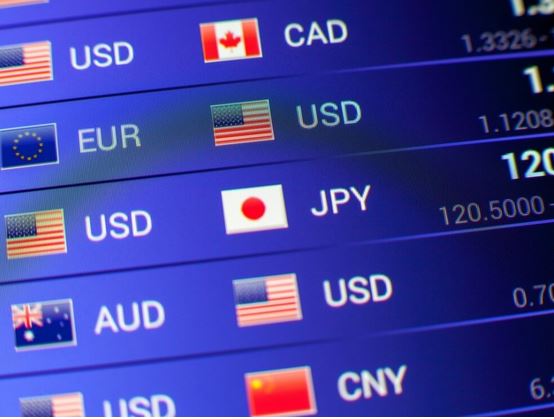Forex traders must consider various potential indicators to determine the best strategy for a currency pair. One of the most important aspects of defining a strategy is how volatility affects the currency pairs. The Forex charts show periods of little price movement followed by sharp spikes and selloffs, which traders can use to fine-tune their strategies. Which Forex pairs are the most volatile (they move the most)?
Since the Forex markets are extremely volatile, predicting the most volatile currency pairs during certain periods is difficult, if not impossible. The ten pairs below regularly rank highly in terms of volatility.

The following are the most active Forex pairs:
AUD/JPY – The average daily pip move over the past ten weeks was 99.37 pips or 1.12%.
The inverse relationship between the Australian Dollar and Japan’s imports of various commodities makes for excellent trading opportunities, especially when commodity prices are volatile.
AUD/USD – Over the past ten weeks, the average daily pip move was 67.14 pips or 1.01%
In addition to exporting commodities, Australia is also a large importer of commodities, mostly valued in US Dollars. Therefore, US monetary policy can impact it, causing the Australian Dollar to increase in volatility.
CAD/JPY – The average daily pips move has been 103.61 pips or 1.07% over the past 10 weeks
Similarly to the AUD/JPY, Canada is a leading exporter of oil and commodities, and Japan is a net importer, resulting in a dynamic similar to the AUD/JPY based on oil prices and supplies.
NZD/JPY – Average daily pips move over the past ten weeks: 97.58 pips or 1.19%
Australian and New Zealand Dollars have similar relationships to the Japanese Yen, but soft commodities are more important.
GBP/AUD – Average moving pips per day over the past ten weeks: 142.02 pips or 0.78 per cent
Several factors influence this currency pair, including commodity exports from Australia and its close relationship with China. Australia is a Commonwealth country, connecting both countries in many ways.

USD/MXN: Over the past ten weeks, the average daily pips move has been 1,736.65 pips or 0.93 per cent.
With close trading partners and fierce competitors in many markets, this currency pair experiences great volatility, which is also affected by government policies like the 20% tariff on Mexican exports.
USD/BRL – Over the past ten weeks, the average daily pips movement is 591.78 pips or 1.13%
As one of the top emerging markets in the world and a member of the BRICS summit, Brazil provides opportunities for aggressive traders looking to take advantage of daily moves over 500 pips.
USD/ZAR – Average daily pip movement over the past ten weeks: 2,595.06 pips or 1.40 per cent
Due to the country’s gold exports, priced in US Dollars, there is a close relationship between the gold and dollar markets and heavy PIP movements, which are driven by the country’s emerging economy, which is also a BRICS member.
USD/JPY – Average daily move of 129.03 pips or 0.97 per cent over the past ten weeks:
Among the G10 economies, only the US offers a unique opportunity to carry trade due to their persistent deflationary problem and negative interest rates in contrast to inflation and rising interest rates in Japan.
EUR/USD – The average daily pips move over the past ten weeks has been 78.31 pips or 0.73% over that period
Despite its volatility, the EUR/USD, which accounts for 28% of daily trading volumes, is the most liquid currency pair on the market, with above-average volatility compared to other currency pairs in the Top 10.
The VIX (volatility index measure) can help measure the level of uncertainty and volatility in the market. Forex volatility calculators can provide traders with valuable insight into average pip movements.
Bottom Line
Forex volatility calculators are useful for determining which currency pairs are most volatile and which have the biggest daily pip moves. They can help traders determine take profit and stop loss levels, as well as what strategies they should use.


